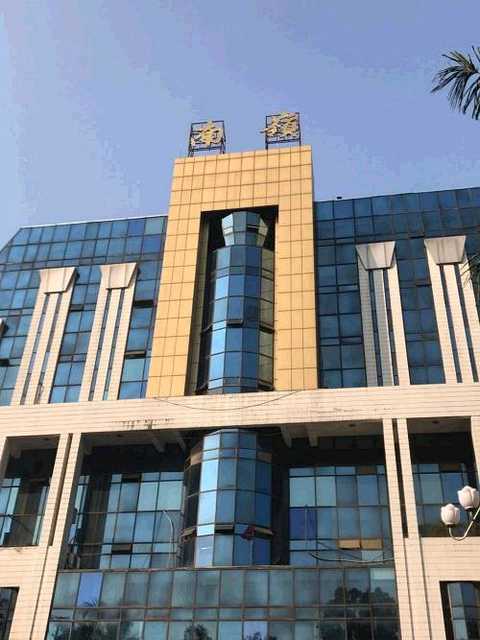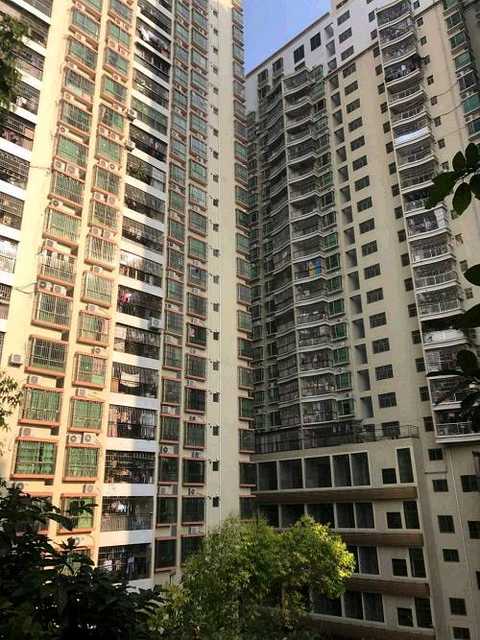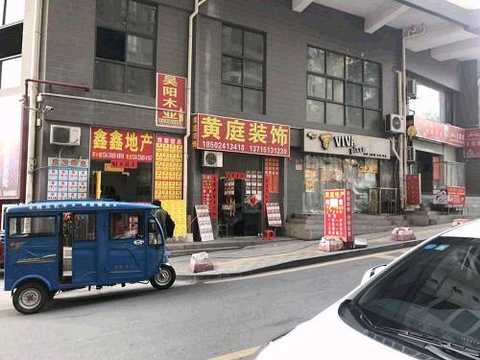This article was first published on the WeChat public account: Securities Times. The content of the article belongs to the author's personal opinion and does not represent the position of Hexun.com. Investors should act accordingly, at their own risk. From "farming" to "plant building", this is a true portrayal of many urban villages in Shenzhen. Nanling Village, once known as the “first village in Chinaâ€, was once the “paradise†of small property houses in Shenzhen. However, it is obviously out of date to build a large number of small property houses. Should the transformation of urban villages be "real estate"? Nanling Village seems to be out of a different way of urban renewal. Walking into the village of Nanling Village in Shenzhen, you may have the illusion. Is this really a village in the city? When mentioning Nanling Village, many people will think of the famous "China's first village", and some people will think of a small property house. Different from the general urban village, Nanling Village can no longer be called “villageâ€. It is more like a bustling town and has its own unique property market property. Different from the regular urban village renewal, Nanling Village has also become a unique sample of urban villages in the context of Shenzhen's industrial restructuring, transformation and quality development. Past and Present of "China's First Village" From the past people called "Ducks Wai Wai" to "China's first village", Nanling Village must have its own merits. Today, Nanling Village can no longer be called by the concept of “villageâ€, which is completely a prosperous town. Nanling Village is located in Nanwan Street, Longgang District, Shenzhen. It covers an area of ​​4.12 square kilometers. It was once dubbed “Ducking Wei†because of poverty. After the reform and opening up, the village has repeatedly made efforts to build industrial zones, and has been vigorously developed by relying on the “double rent†model of factory buildings and housing. Someone once said that the aborigines who were still sweating in Putian yesterday, washed their feet on the ground early, and switched from "farming" to "planting", and also staged a myth of exploding richness. “I came to work in a factory in Nanling Village eight years ago. There are many more foreigners here than locals, but like the city of Shenzhen, everyone is very harmonious, and life here is very convenient.†Miss Chen told reporters. Say. With such a set of public data, perhaps it can also express the feeling of Miss Chen. In 2015, Nanling Village's per capita annual income exceeded 150,000 yuan, and the village collective fixed assets reached 3 billion yuan, while the village's registered population was less than 1,000. A few years ago, Nanling Village was the only village in Guangdong to be selected in the “China's Most Rich Villageâ€. From "farming" to "planting", this is a true portrayal of many urban villages in Shenzhen, but from the past, "Ducksweiwei" to today's "China's first village", there must be extraordinary. Today, Nanling Village can no longer be called by the concept of “villageâ€. It is completely a prosperous town: the village is full of shopping malls, factories are gathering, and a busy and orderly scene. In addition, commercial centers, waterfront parks, hotels, hospitals, schools and other public facilities are readily available, and the industrial development space has also been preserved to a certain extent. However, the reporter found that although there have been earth-shaking changes in Nanling Village, it is different from the urban renewal of the surrounding Yushu Bu Lao Cun and Shawan Areas. Nanling Village has not cooperated with housing enterprises to develop new large scales in recent years. Residential projects, but there are already projects in the surrounding areas of Nanling Village including Vanke, Evergrande and Dazu, and the area is packaged into “Donghu International Residential Areaâ€. The current price is generally more than square meters. 40,000 yuan. According to the data provided by the National Research Center of Midland Real Estate, the average price of second-hand housing in Longgang Buji area was 14,502 yuan per square meter in 2013, and has risen to 38,655 yuan per square meter in 2016. Then, under the temptation of high housing prices and “international settlementsâ€, Nanling Village, which has a unique location advantage, where will urban renewal go? Once a small property house paradise The interest chain of small property houses is complicated, and Nanling Village has always been synonymous with small property houses in Shenzhen. Today, the price of small property houses in Nanling Village is over 10,000. Looking back at the “sample of the property market†in Nanling Village, the small property house is definitely the most striking part. "I have settled in Nanling because I bought a small property house here." Miss Chen said with a smile. Indeed, as early as more than 10 years ago, Nanwan Street in Longgang District, especially in Nanling Village, has always been synonymous with Shenzhen's small property houses. This is the secret of Shenzhen people. After getting off at the bus stop of Nanwan People's Hospital, it is a high-rise building that is still in sight. The name also looks very "atmosphere": Golden Garden, Golden Mansion, Fuyi Garden, Lichee Garden... Nanling East Road goes ahead, as well as Nanjinhaoyuan and Fujin Building. The impression of the small property houses is different from that of ordinary people. The houses here are dozens of high-rise buildings with elevators, but the building density can be described as “one-line daysâ€. In fact, in the official statement of Shenzhen, Shenzhen does not have small property houses, only "illegal buildings." Because small property houses refer to residential buildings where urban residents illegally occupy rural collectively owned land, and Shenzhen realized the nationalization of rural collective land as early as 2004, but Shenzhen is one of the most prominent cities in the country. . Today, most of the small property houses in Nanling Village are also over 10,000. The reporter found that a set of 82 square meters two-bedroom units in Nanjinhaoyuan had a asking price of 850,000 yuan. "In 2013, the small property houses here will have a good lighting capacity of 7,000 yuan per square meter, and the general price will be sold to nearly 5,000 yuan per square meter. Now the two-bedroom conservative monthly rent can reach 2,300 yuan, rent. The rate of return is not bad." Mr. Yang told reporters that "it may not be a big deal compared with the price increase in Shenzhen, but the small property houses here can solve the problem of housing and can appreciate, what is wrong?" "I have seen many second-hand housing communities around, the price is about 40,000 yuan per square meter, and the monthly supply is still a little difficult." Miss Wu, who is preparing to buy a house, told reporters, "The intermediary said that there are many small people in Nanling Village. Property rights, although the risk is high, but hundreds of thousands of dollars can be bought, that is, the first payment for the purchase of commercial housing, but you can buy yourself to live, a little want to take risks." When investigating in Guanlan and Shajing districts in Shenzhen, the reporter found that some small property houses will also be able to attract funds to the villagers to attract buyers. The reporter found that the Nanling Village Golden Garden and other real estates were found when consulting the Nanling Village planning map. The location was originally an industrial area. Some local villagers told reporters that these plots were leased to developers in the form of industrial land. The lease period was 70 years. As for how developers use them, it is a developer's business. From this point of view, the small property houses in Nanling Village naturally cannot have the so-called village committee certificate. "B-side" updated in the village of the city: "species" high-tech company Although historical issues such as small property houses cannot be solved in a short period of time, many old industrial plants in Nanling Village are quietly “transforming†into a maker space. In addition to the large-scale demolition and construction, Nanling Village is now out of a different road of renewal. The latest data shows that although the total housing in Shenzhen is about 520 million square meters, about 10.35 million sets, the original rural private houses (small property houses) and enterprise collective houses that have not determined the property rights of Shenzhen, which account for 79% of the stocks, cannot be legally listed. Restricted the supply scale of second-hand housing in Shenzhen. The actual commercial housing and affordable housing in Shenzhen is only 170 million square meters, accounting for 15.7%. In any case, hundreds of thousands of yuan can buy a large house, which is a very big temptation in Shenzhen, a high price. However, as early as 2015, the Standing Committee of the Shenzhen Municipal Party Committee reviewed and approved the “Decision of the Shenzhen Municipal People’s Government of Shenzhen Municipality on Strictly Investigating and Controlling Illegal Construction†and “Shenzhen’s Measures on Comprehensively Stemming the Construction of Illegal Construction from the Sourceâ€. "1+2" ​​documents such as "Shenzhen City's Measures for the Investigation of Common Land Responsibility for Illegal Land Use and Illegal Construction Work". The three documents “Jianjian†were illegally built, and naturally included illegal buildings in the village. The villages in the city should continue to “plant buildingsâ€, and it is obviously out of place to choose a large number of small property houses. Then, the choice of large-scale demolition and reconstruction is one of the ways in which most villages in Shenzhen choose to continue to “plant buildingsâ€. According to the Shenzhen Municipal Planning and Land Commission, the “13th Five-Year Plan for Urban Renewal in Shenzhen†was issued. During the planning period, we will strive to complete 100 urban villages or old residential areas and old commercial district comprehensive improvement projects, and complete the renovation of about 20 urban villages. The project meets the needs of modern housing for 500,000 people. In terms of updating the guidelines for the old city, the document also mentioned the adoption of an integrated approach based on comprehensive remediation and prudent demolition and reconstruction. Most of the villages in the city chose to cooperate with the developers to make old-fashioned reconstructions, and the reconstruction of Nanling Village seems to be a bit different. Although historical issues such as small property houses cannot be solved in a short period of time, there are no new residential renewal projects in the village, but many old industrial plants in Nanling Village are quietly “transformingâ€. Some become the maker space, and some factories are no longer the industry in the past, but the R&D center and the original art. In addition, the 1983 creative town built by Nanling Village will be officially completed in April, becoming a new economic growth point for Nanling Village in the next few years. After some rectification, the space created by Tsinghua Enlighten Technology Park has enabled the “three to one supplement†old industrial park to achieve “innovative butterfly transformationâ€. In the past 2016, this once-famous "China's first village" not only built a science and technology park, but also set up a bio-pharmaceutical research institute, and even involved in movies, artificial intelligence, acquisition of investment companies and other "high on the" industry. For the change in Nanling Village, the local villagers are happy to see it: Who can guarantee that we can't hatch the second Tencent? It can be seen that the industrial development space of Nanling Village has been broadened to a certain extent, which may be a new road for the renewal of the urban village in addition to the large-scale demolition. In fact, the Shenzhen market has already seen a “micro-reformâ€. The so-called "micro-reform" is not a major demolition of large-scale construction, but on the premise of maintaining the construction pattern basically unchanged, through the partial demolition of buildings, the replacement of building functions, the preservation of repairs, and the improvement of infrastructure, etc. Implement the update. In addition, after the property has been upgraded and upgraded, the benefits will also be improved, and the urban village collective will have more funds to invest in supporting construction, which will further improve the environment and appearance of the village. Then, should urban village reconstruction not emphasize "real estate"? The village in the city is a real estate company, but should we reserve sufficient industrial space to diversify? In this regard, Yan Yuejin, research director of the Yiju Research Center think tank, believes that the transformation of urban villages is to solve industrial problems and housing problems, so housing construction is reasonable, but the key is to make new industries, and the industry is to meet market demand. Factors, not housing. If the big demolition and grand construction is the "A side" of the urban village reconstruction, then the transformation of Nanling Village may be the "B side" of the urban village renewal. Once a small property rights paradise is now out of a different road to renewal, Nanling Village has also become a unique sample of urban renewal. Textile Fabric,Traditional Fabric,Kashmir Fabric,Classical Fabric Wujiang wanwangTextile Co.Ltd , https://www.viscose-fabric.com



As we all know, buying and selling small property houses is not protected by law. It can almost be said that buying and selling depends on “creditâ€, but this does not seem to affect the sales of small property houses. From the intermediary shops on both sides of the village road, you can know one or two. . Even the grocery store, the lottery betting point, and the convenience store door are posted with many houses for sale and rental information. In addition, the rental of small property houses in Nanling Village is also very popular. Many white-collar workers who work in Luohu District and Buji Area in Shenzhen are rented here. "The house here will not have any proof of fundraising in the village. Even if the owner who bought it first has no village committee certificate, the sale is to go to the law firm to open a transfer certificate." Mr. Yang said, "What is actually going to be?" The proof of fundraising in the village is more troublesome. Everyone knows that it is a small property house, but here is such a large scale that has already become a scale. How could it be demolished?" 
It can be seen that the interest chain of small property houses is quite complicated. The problem of small property houses in Nanling Village is also a microcosm of the current situation of small property houses in Shenzhen. The reporter found that there are a number of "real estate companies" in the Buji area of ​​Shenzhen. These companies are not seen in the newspapers, and even do not print the company name on the real estate leaflets, just like a "invisible person", and gave birth to a huge Economic profits, but this kind of profit is based on the strong demand of many people for urban housing and the helplessness of not being able to afford commercial housing.